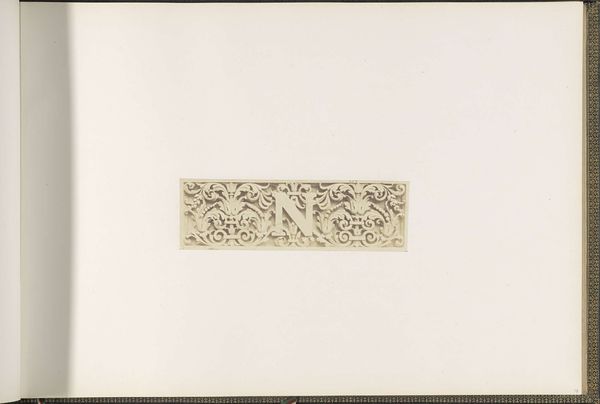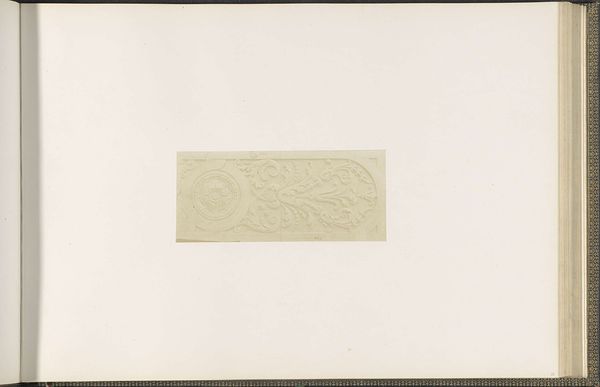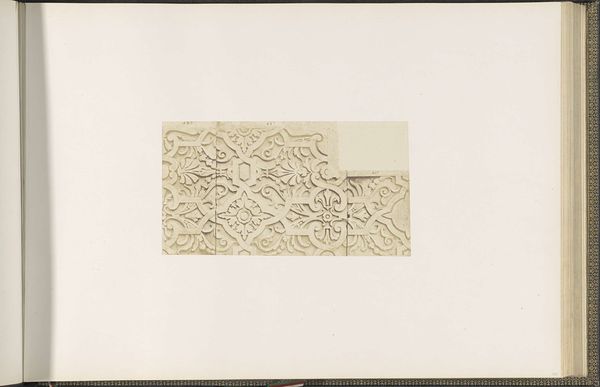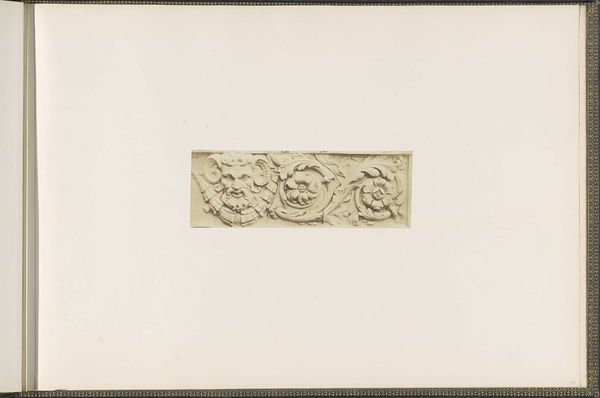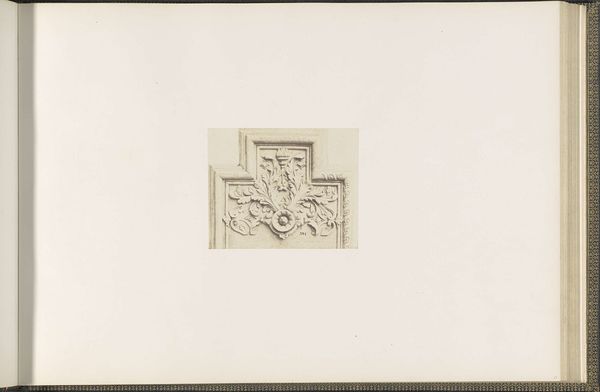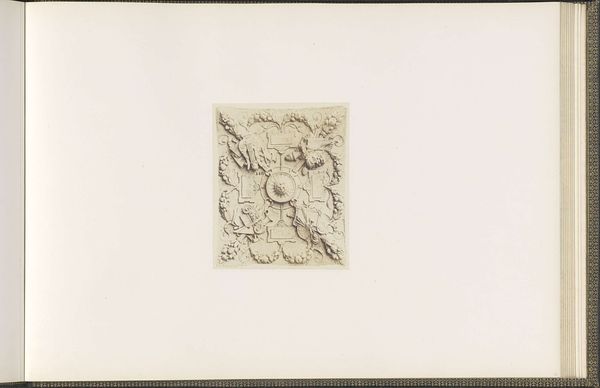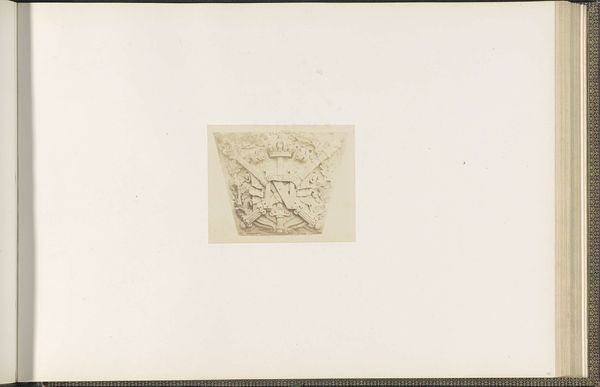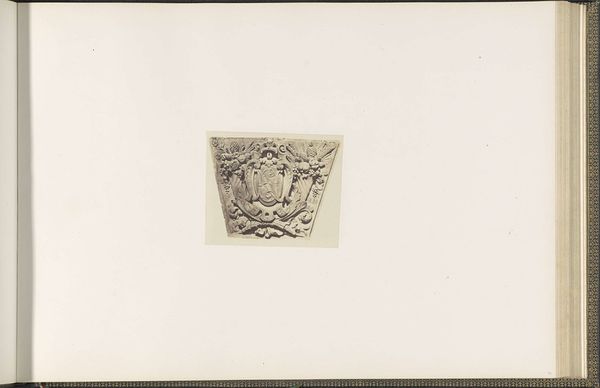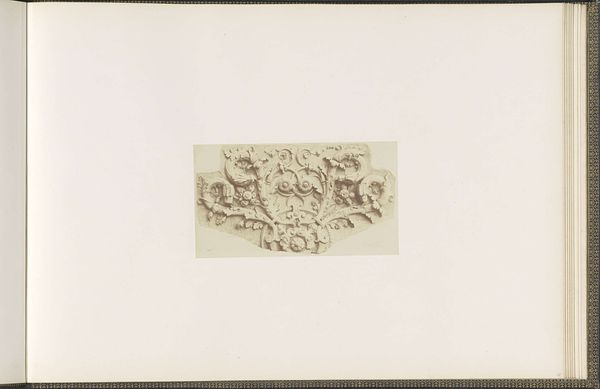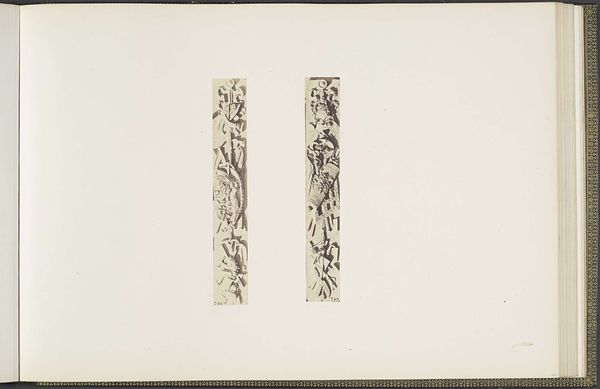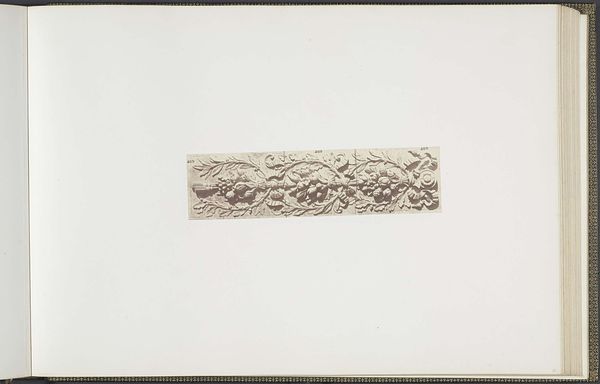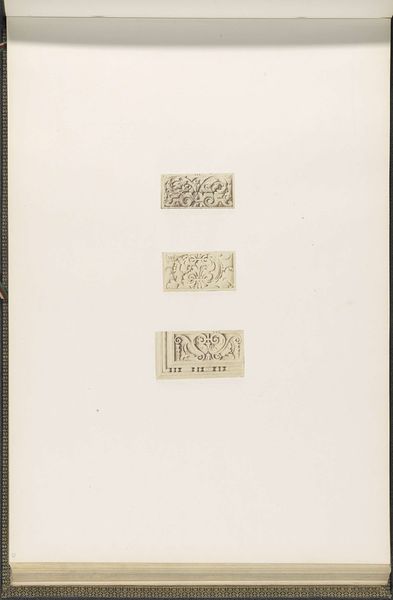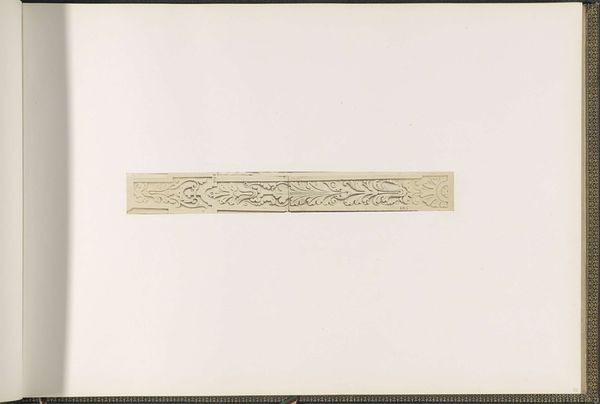
Gipsmodel voor een gevelversiering van de Bibliothèque Impériale van het Palais du Louvre c. 1855 - 1857
0:00
0:00
drawing, ornament, paper, pencil
#
drawing
#
neoclacissism
#
ornament
#
paper
#
form
#
pencil
#
line
Dimensions: height 376 mm, width 523 mm
Copyright: Rijks Museum: Open Domain
This plaster model for façade decoration of the Bibliothèque Impériale at the Palais du Louvre was crafted by Edouard Baldus. It's a fascinating example of how architectural design relies on skilled handwork. Plaster, a humble material, becomes the vehicle for intricate floral and foliate patterns here, and it gives you a sense of the level of ornamentation that was deemed appropriate for such a significant civic structure. The production of such models would involve a workforce of skilled artisans, each contributing to the overall aesthetic of the building. This division of labor, while efficient, also highlights the social stratification inherent in the art world. Understanding the material and the making process allows us to consider not just the aesthetic value of the design, but also the human effort and social dynamics that went into creating it. These details challenge traditional notions of art by blending craft, design, and materiality.
Comments
No comments
Be the first to comment and join the conversation on the ultimate creative platform.
